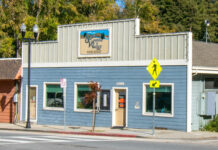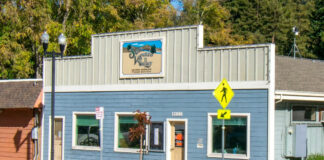
During the regularly scheduled March 15 council meeting, Scotts Valley began the challenging journey toward deciding how to plan for 1,220 new housing units in the upcoming Regional Housing Needs Allocation cycle.
Taylor Bateman, Scotts Valley’s community development director, introduced the item, noting Kimley-Horn and Associates Inc., a planning and design engineering firm, has already been working behind the scenes on the Housing Element plan.
“Tonight’s conversation is a precursor to a more in-depth joint City Council and Planning Commission study session that’s scheduled for April 5,” Bateman said. “At that meeting there will be a more in-depth look at candidate sites for future housing. There will be discussion around policy programs to assist with that housing production, as well.”
No formal action was requested from the council.
Bill Wiseman, of Kimley-Horn, said he just wanted to set the stage for the Housing Element process with his presentation.
“Kind of a 101 on what a Housing Element is,” Wiseman began. “It’s required by the State, and it’s part of the General Plan. So, it’s one of the eight required elements. It identifies projected housing needs by income category. It has a number of goals, policies and programs—and quantified objectives that address both current housing needs and future growth needs for all incomes.”
It needs to be certified by the State, through the Department of Housing and Community Development, he added.
“That’s, in-part, for compliance with state laws,” he said. “And from the last—fifth—cycle, to what we’re working on now—the sixth cycle—there are a lot of new laws…It’s kind of a different ballgame in that respect, so it’s a bit more onerous to put these together.”
A Housing Element must demonstrate the City’s ability to meet future housing needs, Wiseman said.
“That’s through the sites analysis and the capacity strategies that we’re going to talk about,” he said. “It’s very tangible.”
There will be a “robust” community engagement process, to make sure Scotts Valley residents are on-board with the residential development plan, he pledged.
The City could face financial penalties or lose the ability to control home-building in the community if it doesn’t do a good enough job on its Housing Element, Wiseman told council members.
“Timeliness is an important aspect of this,” he said, noting Scotts Valley has until the end of December to complete the certification process. “That’s kind of a firm deadline.”
The State will be looking closely at how Scotts Valley completes the Affirmatively Furthering Fair Housing part of its Housing Element, which is a section dealing with combatting historical segregation patterns, he stressed.
The City is required to plan for 1,220 units during the 2023-2031 RHNA cycle, which was decided through an Association of Monterey Bay Area Governments deliberation.
Scotts Valley must be ready to accommodate 392 Very Low Income units for people making up to 50% of Area Median Income (up to $77,750 annually); 257 Low Income units for people making 51-80% of Area Median Income (maximum $124,750 annually); 154 Moderate Income units for people making 81-120% of Area Median Income (maximum $124,751 annually); and 417 Above Moderate Income units for people making more than 120% of Area Median Income (more than $143,150 annually).
The income range is based on the 2022 federal housing authority’s Area Median Income for Santa Cruz County of $119,3000 for a family of four.
“So, how does this compare historically?” he asked rhetorically. “Well, it’s a lot. In fact, it’s about a nine-fold increase from your fifth cycle.”
Ines Galmiche, a planner with Kimley-Horn, said the consultant has been evaluating a number of methods that could generate this level of housing in Scotts Valley. Some projects that are already in the works might qualify, she noted.
Plus, promoting granny flats (aka accessory dwelling units) could help add to the tally, although she cautioned that because there hasn’t been many of these constructed in the city in the past, it will be hard for Scotts Valley to project a large number of these will, in fact, get built.
But the Town Center Specific Plan could be an opportunity for satisfying the RHNA count, she said, and suggested existing vacant residential lots are the low-hanging fruit.
“Similarly, we may use the residentially-zoned properties that are considered underutilized,” she said. “These are sites that have existing capacity to accommodate additional units.”












